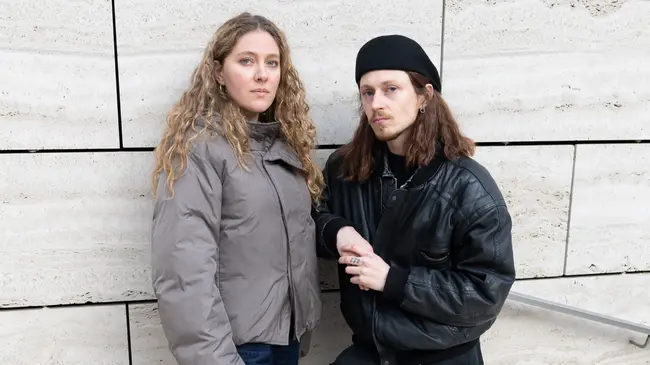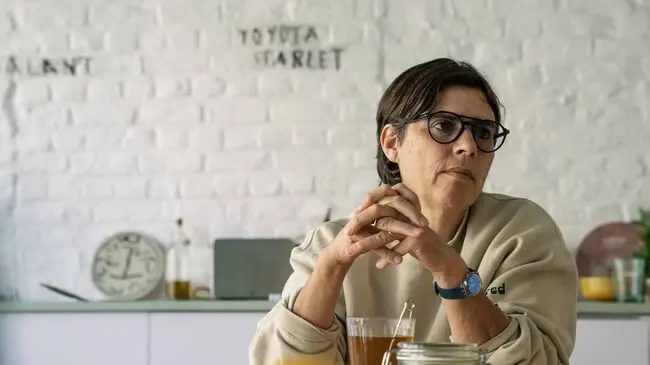Photography as a tool rather than an aesthetic

Lars Duchateau's work tries to translate small, daily encounters and anecdotes into a visual discourse where documents, articles, or texts are used to shape the time frame and background. But on the other hand, he doesn’t want too much of his own emotion to get involved. 'That’s is something for the spectators, they get to form an interpretation.’ We met Lars in his hometown Hasselt, where we saw Kristof Vrancken’s photo exhibition The Sustainist Gaze at z33. Vrancken advocates for a more sustainable relationship with nature and as a photographer, he experiments with emulsions of algae, berries, and knotweed. A process where Duchateau is fascinated by.
You just graduated, how were the last few years?
I look back on my studies with a positive feeling. The first years were very technical instead of creative, but afterward that turned out to be a strength. I learned to photograph by working with that restriction. Only in the last period, it became clear to me, very unconsciously, what I liked or what I was good at. My vision of photography has changed over the years, I had always used it as a tool for documentation, which is still the strength and essence of photography to me. Photography used to have a big evidential value, nowadays it has a more problematic status because it can be manipulated in so many ways. There’s always suspense of disbelief in the background and by the years the original evidence has only become less clear.
My vision of photography has changed over the years


How would you describe your own work?
I love photography as a medium. I still can be gone for hours just searching for cameras or techniques I have never heard of after 8 years of studying. On the other hand, I do think it is important to start from the fact that photography is more a tool than an aesthetic. The power of freezing something in time is so magical and very powerful and that needs the right approach.

Lately, I have been working a lot with parameters that I set for myself. Usually, with other texts attached, I write down step by step what I have done or what my photos are about. It becomes very pragmatic, but still holds a lot of content too. It almost becomes a scientific process that repeats itself, although photography remains a medium that revolves around replaceable images. That’s an interesting contradiction to me.


Is describing things a link between you and Kristof Vrancken?
Yes, although he works in a completely different way than I do. We both describe what is happening or what we see, so the spectators build their own interpretation. Vrancken uses a natural process and very powerful content.
We both describe what is happening or what we see
He works with natural emulsions and then uses them at the very same location where he found them. He stays true to the location. You could almost say it becomes a kind of residency, a collaboration with the landscape. That is also what I am doing at the moment. I find it difficult to stay close to home, but I do think it’s important as an artist to make and use things that are close to you. Not only mentally, but also physically. It has something very noble and authentic.

What is your favorite work here in the exhibition?
That’s the video installation and the introduction to the show, Mourning. When I walked in, I immediately found a link to Stalker by Tarkovsky. I have watched the movie several times and I have studied several of his works. Tarkovsky is considered to be one of the greatest cineastes and poets so it is always a bit dangerous to appropriate these links, but the way Vrancken uses this video as a state of mind, I found joyful. It’s exhibited in a hallway where the wing emerges vertically, which emphasizes the tension even more. Vrancken's other works are more visual or scientific. In contrast, Mourning is more of an experience that binds the show together.


The work Transit also sparked my interest. There is the location on the photo, but certainly also the power of the process of his photography that comes across. It can be seen as beautiful, but it can also fall apart very quickly and be perceived as manneristic. I think he found a subtle in-between. To me, more than the different kinds of chemicals and ways of documenting something, his work revolves around the fact that it is always very rooted in the world where we live and what happens (or doesn’t happen).
Different Class works with the interest of their community at heart.
Our work’s purpose is to foster a solid network for independent artists, those who love them, and those who want to support them. Become a member to contribute to the local Belgian art scene.





